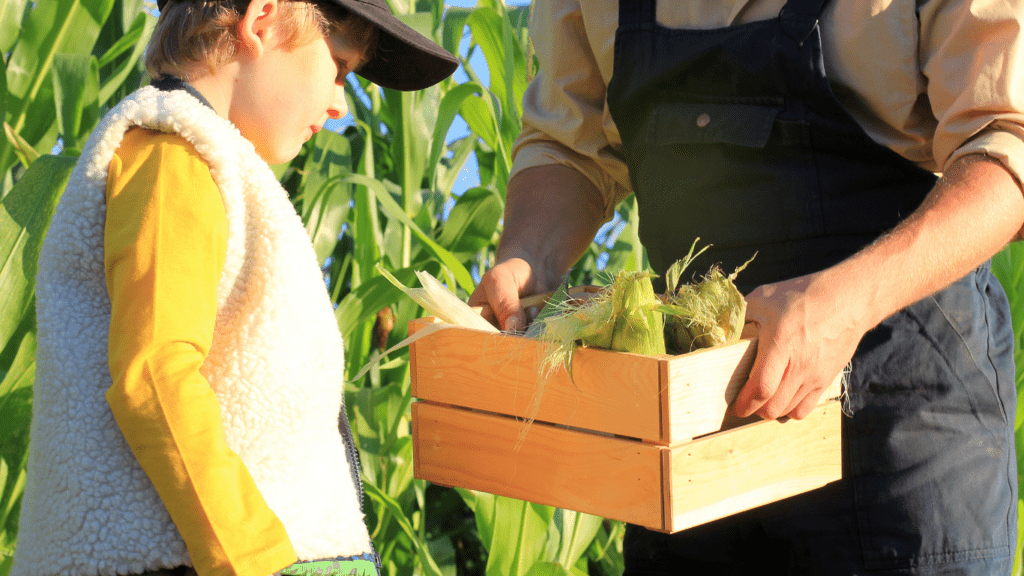Understanding the Need for Hidden Funding
Agriculture’s financial landscape presents unique challenges. Farmers often face unpredictable factors like weather, market fluctuations, and rising costs. Hidden funding opportunities can alleviate financial pressures. These resources help secure the necessary capital for seed, equipment, and technology.
Government grants rank high among these hidden opportunities. Programs like the USDA’s Value-Added Producer Grant (VAPG) provide funds to small farmers to enhance product value. Microloans from organizations like Farm Service Agency (FSA) also offer essential financial support.
Private sector funding, including corporate sponsorships and nonprofit grants, plays a crucial role. Companies in agricultural sectors often sponsor initiatives that benefit local farmers. Examples include equipment donations and research funding.
Local and regional programs should not be ignored. State agriculture departments and local cooperatives frequently offer grants and low-interest loans. These programs support diverse farming needs, from organic certification to sustainable farming practices.
Consider networking with other farmers and agricultural professionals to discover more funding options. Joining local farming associations or attending industry conferences can provide valuable insights.
Understanding the nuances of these hidden funding sources can significantly impact a farm’s financial health. Exploring various funding options ensures that farmers can weather financial storms and focus on sustainable growth.
By identifying these hidden resources, farmers can secure the necessary support to thrive in the challenging agricultural landscape.
Government Grants and Subsidies
Government grants and subsidies offer significant support for farmers navigating financial uncertainties. Identifying federal and state programs can unlock essential funds to enhance agricultural productivity.
Federal Programs
Federal programs provide diverse opportunities for funding agricultural projects. The USDA’s Value-Added Producer Grant helps farmers increase the value of their products through processing and marketing. Features include grants up to $250,000 for working capital and up to $75,000 for planning activities.
Meanwhile, the Farm Service Agency (FSA) offers various microloan programs that accommodate smaller financing needs. Examples include direct farm operating microloans, designed for beginning farmers, and loans for equipment, livestock purchases, or minor real estate improvements. Maximum loan amounts are generally $50,000, making them accessible for farmers with limited resources.
The Environmental Quality Incentives Program (EQIP) supports farmers implementing conservation practices on their lands. Practices like improving irrigation efficiency or managing animal waste benefit from this support. This program emphasizes environmental stewardship while maintaining agricultural productivity.
State Programs
State programs complement federal initiatives by providing localized support. Many states offer grants and loans tailored to regional agricultural needs.
For example, California’s Healthy Soils Program incentivizes sustainable farming practices by providing financial assistance for compost application, cover cropping, and reduced tillage. These initiatives align state goals with environmental conservation and soil health.
Texas, on the other hand, has the Young Farmer Grant (YFG) program targeting beginning farmers aged 18 to 46. This grant supports individuals starting or improving their agricultural operations, with potential awards up to $20,000.
State programs like the YFG address the specific challenges new farmers face, promoting agricultural growth among a younger demographic.
Navigating state-specific resources involves contacting local agricultural agencies or consulting state extension services, which offer guidance on available grants and application processes.
This localized support can significantly impact farmers’ ability to secure funding for their operations, tailored to their unique regional challenges.
Private Sector Funding

Accessing private sector funding is crucial for agricultural growth. Leveraging resources from corporations and nonprofit organizations ensures diversified financial support.
Corporate Grants
Corporate grants offer substantial funding opportunities. I often find programs from major agribusinesses like Monsanto’s Grow Communities program or Bayer Fund’s America’s Farmers Grow Ag Leaders.
These grants aim to support sustainable practices, research, and community projects. It’s essential to research corporations that align with specific farming needs.
For example, applying for funding from companies focused on innovative agricultural technologies or sustainable farming can lead to substantial support. By staying updated on corporate initiatives and deadlines, I can maximize the chances of securing funds.
Nonprofit Organizations
Nonprofit organizations play a significant role in agricultural funding. Entities like the Farm Aid, American Farmland Trust, and Sustainable Agriculture Research & Education (SARE) provide grants and technical assistance. These organizations focus on preserving farmland, promoting sustainable practices, and supporting family farms.
I explore opportunities from these nonprofits to discover grants tailored to various agricultural projects. Applying for assistance programs from these organizations can cover areas such as:
- environmental conservation
- organic farming
- rural development
By connecting with multiple nonprofits, I enhance my network and uncover unique funding prospects.
Alternative Funding Sources
Exploring alternative funding sources in agriculture opens doors to non-traditional pathways for financial support. Leveraging unique platforms and local initiatives can bridge funding gaps effectively.
Crowdfunding
Crowdfunding connects farmers directly to potential investors or supporters. Platforms like Kickstarter, Indiegogo, and GoFundMe allow farmers to pitch their projects online.
Successful campaigns often involve a clear, compelling story and detailed plan. For instance, a farmer might crowdfund to invest in solar panels, enhancing sustainability efforts. Rewards-based crowdfunding offers investors tangible incentives, while equity crowdfunding provides stakeholders a financial interest in the farm.
Community Initiatives
Community initiatives harness local support for agricultural projects. Community Supported Agriculture (CSA) programs enable consumers to buy shares of a farm’s harvest upfront.
This upfront payment finances seasonal operations, fostering a deep connection between farmers and their communities. Additionally, local food cooperatives often provide funding or low-interest loans to farmers who supply their stores, creating a mutually beneficial ecosystem.
Engaging in local farmers’ markets can also lead to networking opportunities and financial support from community members passionate about agriculture.
Leveraging Technology for Funding
Tech advancements create new ways for farmers to discover hidden funding opportunities. Using online platforms and social media campaigns, farmers can amplify their outreach efforts.
Online Platforms
Various online platforms offer specialized agricultural funding options. Grants.gov serves as a comprehensive repository for federal grants, showcasing opportunities from multiple agencies.
Farmers can filter searches by specific criteria, ensuring they find the most relevant funding sources. AgFunder provides venture capital for agriculture tech startups, allowing innovative ideas to secure financial backing.
Websites like FarmRaise aggregate funding options like grants, loans, and cost-share programs, simplifying the search process. These platforms streamline access to financial support, making it easier to find suitable opportunities.
Social Media Campaigns
Farmers use social media to launch targeted funding campaigns. Platforms like Facebook, Instagram, and Twitter engage broader audiences, raising awareness about funding needs.
Utilizing hashtags like #AgFunding and #FarmSupport increases campaign visibility. Successful campaigns often feature compelling stories and visuals, encouraging followers to contribute.
For instance, Instagram posts showcasing farm activities can draw interest and financial support. Collaborating with influencers in the agricultural sector also expands reach and credibility.
By harnessing the power of social media, farmers make it easier to attract funds and build community support.
Building Strong Proposals
Creating compelling proposals is crucial for securing agricultural funding. A well-crafted proposal can significantly boost your chances of receiving financial support.
Research and Planning
Thorough research and planning form the backbone of a strong proposal. Identify funding sources that align with your agricultural needs. Use platforms like Grants.gov and AgFunder to find relevant opportunities. Understand the funder’s priorities, guidelines, and mission. This allows you to tailor your proposal accordingly.
Utilize data and evidence to showcase the impact of your agricultural project. For instance, include statistics on expected yield increases or community benefits. This demonstrates the feasibility and value of your project.
Writing Tips
- Clear, concise language makes your proposal easy to understand. Avoid jargon unless it’s industry-standard and necessary for clarity. Start with a strong executive summary highlighting the key points of your proposal. This should grab the reader’s attention immediately.
- Detail your project’s objectives, methods, and expected outcomes. Use specific numbers and timelines to define your goals. Explain how the funding will be used and outline a budget with itemized expenses. Transparency in financial planning enhances your credibility.
- Include letters of support from community members, local businesses, or agricultural experts. These endorsements validate your project’s relevance and potential success. Additionally, proofread rigorously to eliminate errors and ensure professionalism in your proposal.



